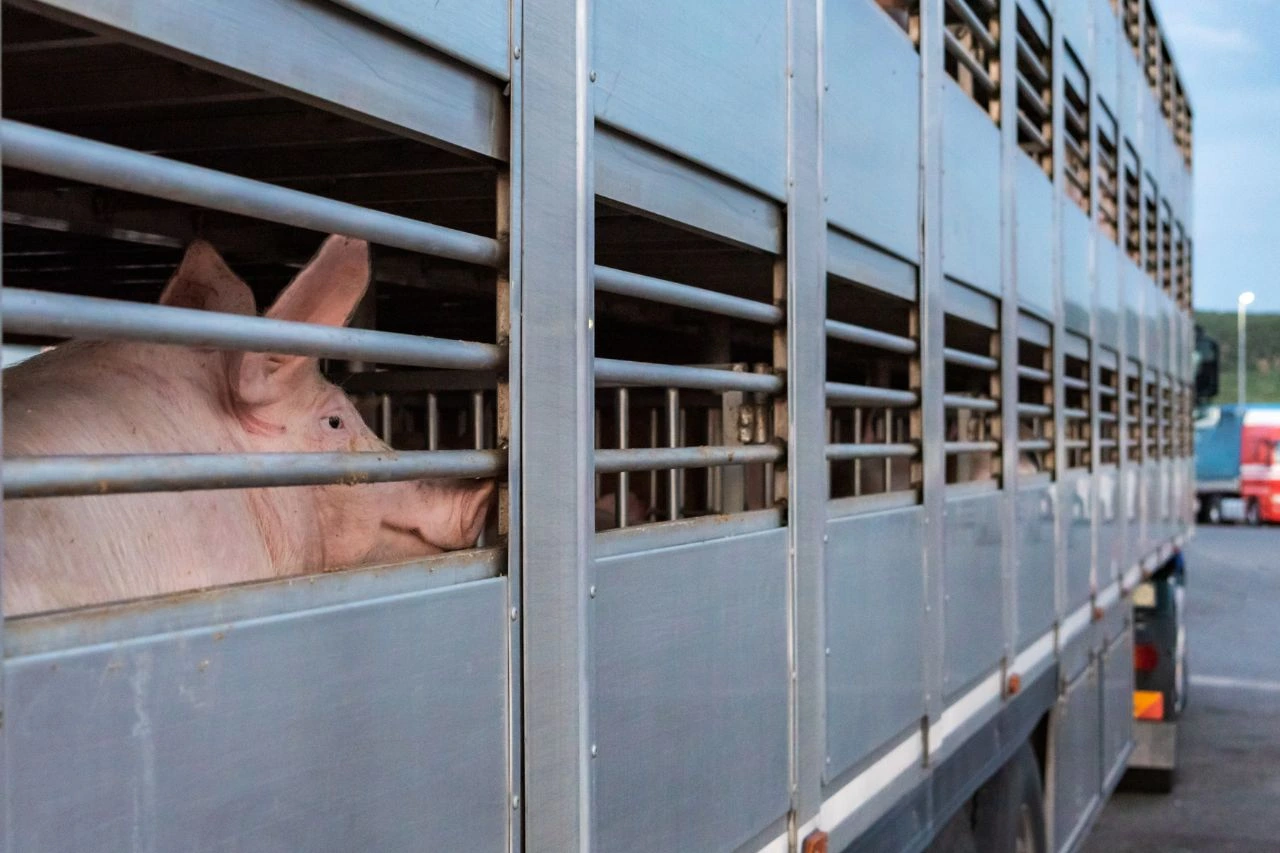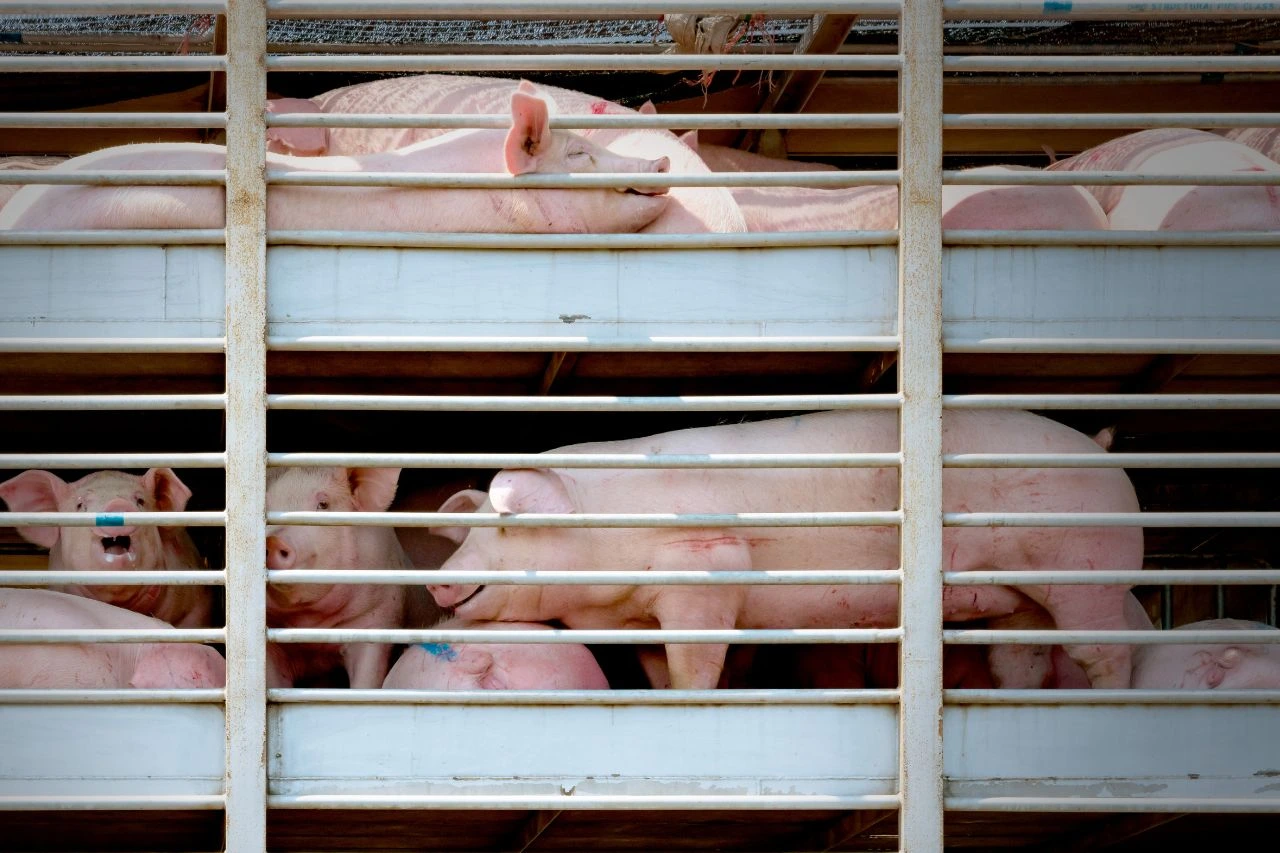Pig transport in the UK is a highly regulated and specialised task that demands both knowledge and compliance with animal welfare standards. Whether you're moving weaners, growers, or finishers, understanding the rules and best practices is important for safe, legal, and humane pig transport.
In this in-depth guide, we will walk through everything from legal requirements and vehicle standards to handling techniques and documentation.
Understanding UK Regulations for Pig Transport
Animal Welfare (Transport) Order 2006 in the UK covers the regulations to transport live pigs. Corresponding regulations also applied to Scotland, Wales, and Northern Ireland. These rules are designed to eliminate unnecessary suffering of pigs during transport.
Key Legal Requirements Include:
- Pigs must be fit for transport. This means no injuries, illness, or advanced pregnancy (unless moving for veterinary treatment).
- Transport time limitations apply based on vehicle type and journey purpose.
- Vehicle certification is required for long journeys (over 8 hours).
- Animal Transport Certificates (ATCs) must be completed for most commercial journeys.
- Certificates of Competence are mandatory for drivers and handlers.
If a pig transporter does not comply with the mentioned requirement, they might face hefty fines, transport bans, or criminal prosecution.
JCS Livestock offers affordable Pig Transport Services. We’re licensed and have over two decades of experience in livestock transport. Get in touch!
Preparing Pigs for Transport
Before transporting pigs, preparation is necessary to minimise stress and safety.
Steps to Prepare for Pig Transport Include:
- Health check: Inspect each pig for signs of injury, illness, or fatigue.
- Feed and water: Provide adequate water up to the point of loading. Feed should be managed depending on the transport duration.
- Loading plans: Group pigs by size and age. Avoid mixing unfamiliar animals.
- Bedding: Use dry, absorbent material like straw or shavings depending on temperature and transport conditions.
- Ear tagging or slap marking for identification if required.
These are some of the best practices to prepare pigs for transportation in the UK and worldwide.
Vehicle for Pig Transportation
For pig transport, using the right vehicle is crucial. The vehicle must shield the pigs from weather, offer adequate ventilation, and be easy to disinfect and clean.
Types of Vehicles Used:
- Single-deck trailers or trucks for shorter journeys or smaller loads.
- Double-deck trailers with hydraulic lifts for higher volume, so that pigs are not overcrowded.
- Temperature-controlled vehicles for long distances, particularly in extreme weather conditions.
Vehicle Requirements Include:
- Ventilation for fresh air and moderate temperature.
- Non-slip flooring to keep pigs safe during transport.
- Partitions and gates to separate groups and prevent piling or crushing.
- The provision of water supply and tankers for long transports.
Please note that the vehicles should be DEFRA-approved for long-distance relocation, and should be maintained periodically to meet welfare standards.

How to Load and Unload Pigs Safely
Pig handling is not a simple task. These animals are known for their stubbornness, stressful nature and are weak against harsh weather. Therefore, they need to be loaded and unloaded with care for their well-being.
Best Practices for Safe Loading Include:
- Use ramps with a shallow gradient (less than 20°) and side guards.
- Keep pigs calm using boards or paddles not sticks or electric prods.
- Minimise noise and distractions.
- Use proper lighting to guide pigs and reduce hesitancy.
Unloading must be quick but gentle. Livestock transporters must ensure that pens are clean, dry, and pre-prepared at the destination.
Journey Time, Rest Periods, and Welfare During Transit
Journey times must align with legislation based on journey type:
Journey Categories:
- Short journeys: Under 8 hours.
- Long journeys: Over 8 hours require special vehicle approval, driver training, and detailed planning.
Time Limits:
- Pigs can be transported up to 24 hours if provided with continuous water and access to feed every 12 hours, with rest included.
- After 24 hours, they must be rested for at least 24 hours in an approved resting facility.
Monitoring pigs during transit for panting, piling, or aggressive behaviour is essential. Record keeping during long journeys must include rest stops, ventilation checks, and any health issues.
Documentation Needed for Pig Transportation
Failing to carry the correct documentation can halt your journey or result in fines. Check that the following documents are in order:
- Animal Transport Certificate (ATC): Details journey, number of animals, and health declarations.
- Certificate of Competence: For any person handling or driving livestock.
- Vehicle Approval Certificate: For long-distance transport vehicles.
- Journey log: Required for long journeys, detailing route, rest stops, and expected arrival.
Digital solutions now allow for electronic ATCs and real-time journey monitoring, making compliance simpler and faster.
Biosecurity and Cleaning Protocols
Preventing disease spread during pig transportation is non-negotiable.
Effective Biosecurity Measures:
- Clean and disinfect vehicles before and after each journey.
- Use approved disinfectants and allow proper drying time.
- Wear PPE and disinfect boots between farm visits.
- Maintain a disinfection logbook and vehicle cleaning records.
- Avoid cross-contamination by using dedicated clothing and equipment for each transport session.
Failure to implement these measures could lead to outbreaks of diseases like ASF or PRRS, causing devastating economic loss.
Special Considerations for Exporting Pigs
For exporting pigs to the EU or beyond, additional regulations apply post-Brexit.
Export Requirements Include:
- Export Health Certificates (EHCs) from an authorised vet.
- TRACES system registration for EU movements.
- Isolation and testing periods depending on the destination.
- Customs clearance and route planning to reduce stress and delays.
Exporters must liaise with APHA (Animal and Plant Health Agency) to ensure all paperwork and procedures meet destination country requirements.
How to Reduce Stress During Pig Transport?
Stress during transport leads to meat quality issues (PSE/DFD meat) and health risks.
How to Minimise Transport Stress:
- Transport during cooler hours in summer.
- Avoid mixing unfamiliar pigs.
- Reduce handling time by streamlining loading/unloading.
- Maintain quiet environments with low lighting.
- Provide adequate space to lie down but not move excessively.
Happy, healthy pigs lead to better productivity and market value.
Penalties for Non-Compliance
UK authorities, including DEFRA and Trading Standards, enforce animal transport laws rigorously.
Penalties May Include:
- Fines up to £5,000 or more.
- Revocation of transport authorisation.
- Prosecution for animal cruelty or neglect.
- Vehicle seizure and loss of commercial license.
Compliance is not just a legal requirement, it's a moral and commercial necessity.
Choose JCS Livestock for Pig Transport Services
When it comes to pig transport, trust the specialists at JCS Livestock. With over 20 years of hands-on experience in humane, secure, and efficient animal transport, we are your go-to partner for moving pigs across the UK or around the globe.
Whether you're a breeder, farmer, or commercial supplier, we understand the unique needs of pigs and handle every journey with expert care. As a division of James Cargo Services Ltd, we combine logistical excellence with animal welfare expertise to deliver stress-free transport solutions by air, road, or sea.
Choose JCS Livestock for reliable pig transport services.
Conclusion: How to Transport Pigs in the UK
To transport pigs in the UK, pig transporters need to adhere to animal welfare standards, and legal protocols. Whether you're a small-scale farmer or a commercial pig farmer, choosing a reliable livestock transport company with the right equipment, expertise and experience can ensure efficient movement of pigs.
More topics to explore:
